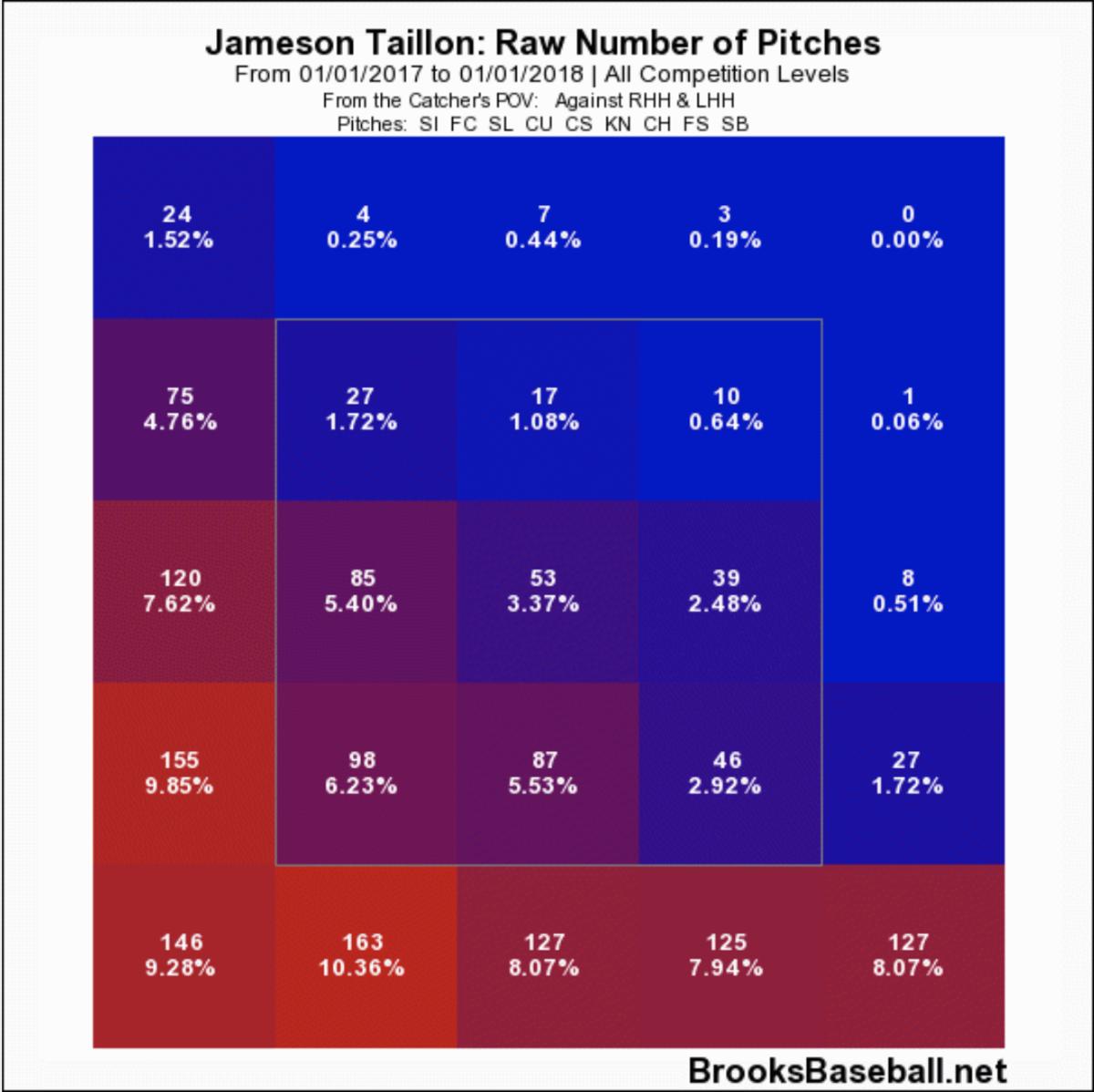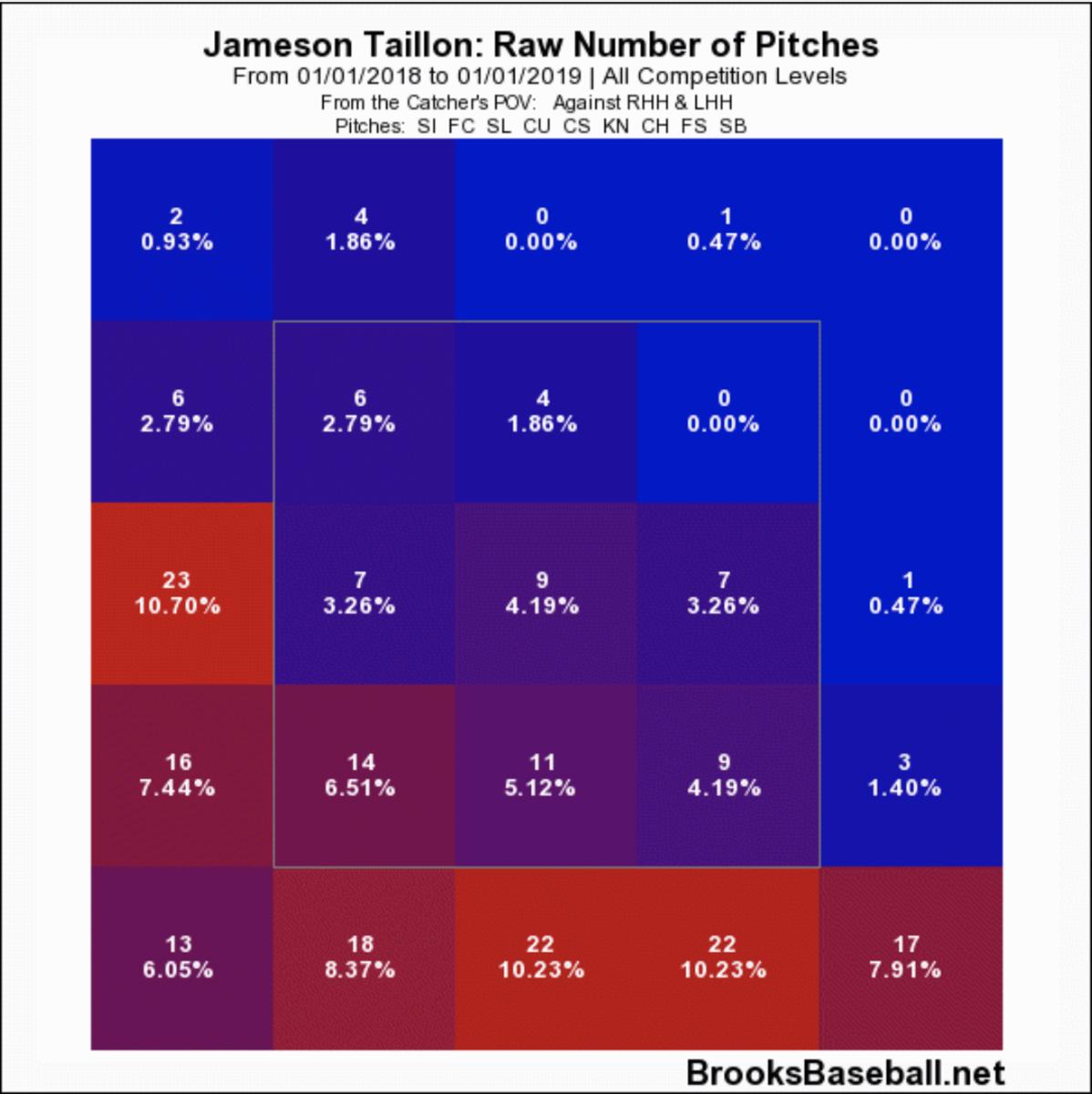How the Pirates' Jameson Taillon Reached His Ace Potential Without Changing a Thing

Jameson Taillon is one of those players whose strong April can easily go overlooked. First, his numbers are strong, but they don’t exactly leap off the page. Through 22 innings covering four starts, he has a 2.86 ERA, 3.40 xFIP, 0.91 WHIP and 21 strikeouts. The WHIP is the lone potential standout, but it isn’t terribly special across a 22-inning sample. Second, the baseball world has long expected this from Taillon. After multiple arm injuries slowed his progress through the minors, and a cancer diagnosis interrupted his 2017 season, Taillon entered this year with a clean bill of health. It’s easy to look at his numbers this season, see a pitcher realizing the potential he has always had now that he’s finally healthy, and move on.
Doing so, however, would miss the uniqueness of Taillon’s potential breakout. There is unquestionably a lot of good happening with the 26-year-old righty, and he indeed could be asserting himself as a true frontline starter. The interesting thing is that his statistical profile is largely similar to last year, except for one major difference. What’s even more interesting is that the difference is awfully hard to explain.
Unlike many previous breakouts on the mound, Taillon’s impressive April isn’t strikeout-driven. His strikeout rate is up to 24.1%, but, again, we’re talking about 22 innings and 87 batters faced. His whiff rate is down a couple of tenths of percentage points, and his o-swing rate, the frequency with which batters swing at pitches out of the strike zone, is down five percentage points. Hitters are making less contact against him in the zone, and that might matter if he were striking out, say, 30% of batters who step to the plate against him. His strikeout rate is improved, but it isn’t gaudy. It’s hard to lean on it for explaining Taillon’s start to the season.
The one significant difference in Taillon’s statistical profile concerns his batted-ball rates. Specifically, his ground-ball rate is up to 57.1% this year after sitting at 47.3% last season. He has shaved points from both his fly-ball and line-drive rates to get the massive increase in grounders, and while his soft-hit rate is flat, his hard-hit rate is down five full percentage points to 24.6%. Both of those would rank among the league leaders over the course of a typical season. This is most likely the why for Taillon’s strong April. But what about the how?
Taillon is a four-pitch pitcher, and that hasn’t changed this year. He came into the majors throwing a four-seamer, two-seamer, curveball and changeup, and that’s still what he throws to this day. The mix among those four pitches has changed a bit, which we'll get to shortly.
In general, a two-seam fastball is going to generate the highest ground-ball rate among the four offerings in Taillon’s repertoire. Since the start of 2017, 10.7% of two-seamers leaguewide have turned into grounders, according to Statcast. That's among all two-seamers thrown, not just ones swung at or put in play. Changeups are the next most likely to generate grounders, with a leaguewide ground-ball rate of 9.7% since last year. Curveballs come in at 7.1%, while four-seamers are at 6.3%. Statcast really is a treasure.
Taillon racked up a 54.8% ground-ball rate with his two-seamer last year. His curve was at 50%, and his changeup was at 45%. As such, a savvy baseball observer would intuitively expect Taillon’s two-seamer usage to be up this season. That same observer might also expect the change to have a higher profile in Taillon’s pitch mix, though it might not seem as important as the two-seamer. Clearly, that should be the pitch driving his increased-ground ball rate.
Believe it or not, Taillon is throwing the two-seamer less often this year, with its usage rate dropping to 30.9% from 33.9% a year ago. The changeup, too, has taken a dive, falling to 8.1% from 9.8%. The curve? That, too, is down, with a usage rate of 22.5% this year. Last year, it was at 26%. Taillon’s four-seamer usage is up to 38.4% from 30.3% last season.
Now, to be fair, the two-seamer, change and curve are all generating a ton of grounders, with ground-ball rates of 67.9%, 80% and 50%, respectively. Taillon may be throwing fewer of them, as a percentage of his total pitches, but they’re all doing a better job of creating grounders this year than they did last year. So what’s the reason for that?
The instinctual thought should be that Taillon is living at the bottom of the zone, but that simply isn’t the case. Check out these zone profiles, courtesy of Brooks Baseball. The first one is for 2017, and covers all two-seamers, curves and changeups thrown by Taillon. The second one is for 2018.


If you take the time to add the numbers in the bottom two rows, you’ll find that 70.5% of Taillon’s two-seamers, curves and changeups were at or below the bottom of the zone last year, while 67.5% of them have been there this year. On top of that, it’s reasonable to expect the swing rate on these pitches to be up this year. After all, a hitter can’t hit a grounder if he doesn’t swing the bat. The truth here, too, runs counter to intuition. Hitters swung at 44.8% of Taillon’s pitches in question last season. This year, that’s down to 42.8%.
Is it possible that Taillon is getting so much more out of his three pertinent pitches that it doesn’t matter that he’s throwing all of them less often? The answer is yes, and it lies in his pitch movement. With information put together from Brooks Baseball and Baseball Prospectus, we can see that Taillon’s pitches are nastier, based on movement than they were last year. Here is his horizontal movement by pitch and year, courtesy of Brooks.

Forget about the negative and positive for a second. What that means is that Taillon’s sinker is moving nearly an inch more on average this year than it did last year. That means it’s darting further in on righties and away from lefties as it gets into the hitting zone. Here’s the same table for vertical movement.

All three pitches are falling off the table more dramatically this season, with the curve being especially filthy. The combination of horizontal and vertical movement on the two-seamer, meanwhile, explains why hitters have rolled over it nearly 70% of the time this season.
Let’s take a look at some of the textbook examples of these pitches in action. First up will be the two-seamer, followed by the change and then the curve.
That is some beautiful, ground-ball inducing movement on all of those pitches. Now if Taillon would just throw more of each of them at the expense of the four-seamer, he could fully realize his ace potential.
These one more thing I want to highlight before putting a bow on this column. You may have already noticed it in the previous GIFs, but we’re going to use a new one to illustrate a key difference in Taillon this season. Here he is in his last start with no one on base.
And here’s Taillon in the windup last year.
That is a striking difference. Taillon had a relatively traditional windup the first two years of his career, but this season starts with his feet parallel to the rubber before taking a short step backward with his left foot and going into his delivery. Whether the simpler windup is also adding to his ground-ball rate is impossible to determine this early in the season, but it’s something that bears watching.
